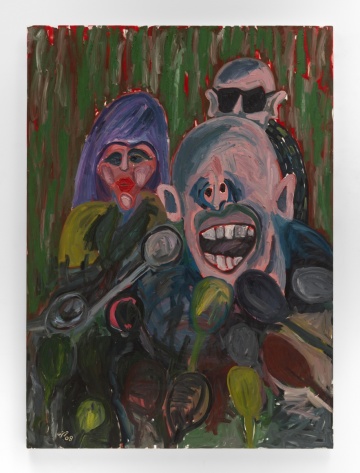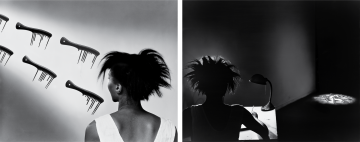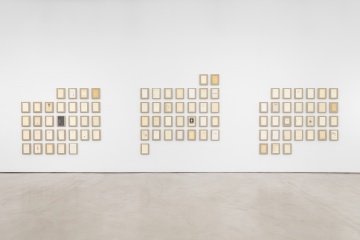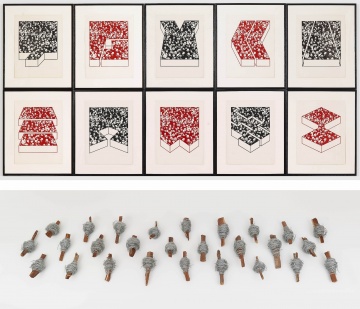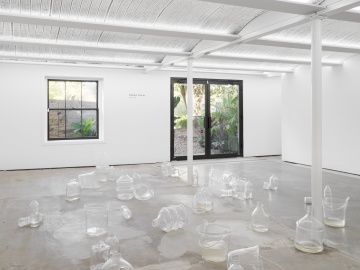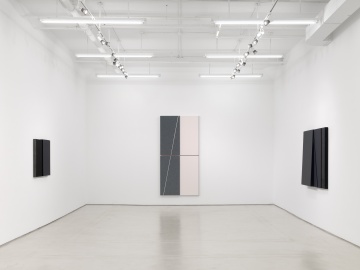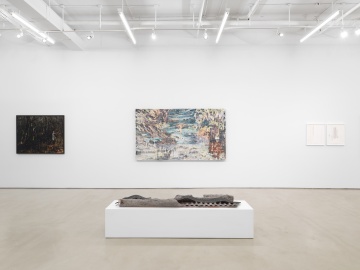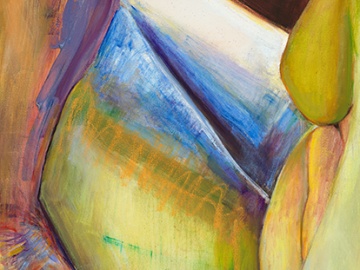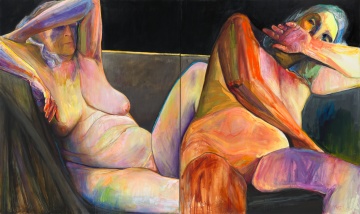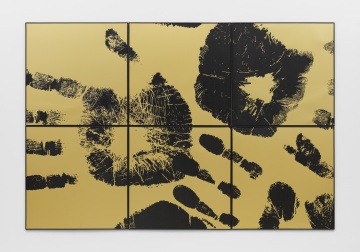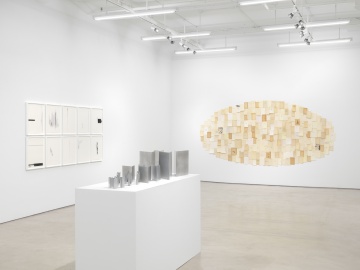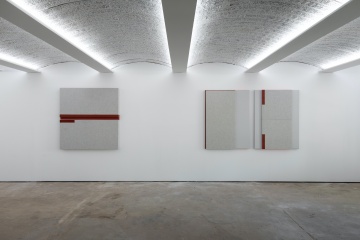Alexander Gray Associates
510 West 26th Street
New York, NY 10001
212 399 2636
Also at:
224 Main Street, Garden Level
Germantown, NY 12526
518 537 2100
New York, NY 10001
212 399 2636
Also at:
224 Main Street, Garden Level
Germantown, NY 12526
518 537 2100
Alexander Gray Associates is a contemporary art gallery in New York City and Germantown, NY. Through exhibitions, research, and artist representation, the Gallery spotlights artistic movements and artists active in the twentieth and twenty-first century. Influential in cultural, social, and political spheres, these artists are notable for creating work that crosses geographic borders, generational contexts, and artistic disciplines. Alexander Gray Associates is an organization committed to anti-racist and feminist principles.
Artists Represented:
Ricardo Brey
Ricardo Brey
Teresa Burga
Luis Camnitzer
Melvin Edwards
Coco Fusco
Harmony Hammond
Jennie C. Jones
Steve Locke
Lorraine O'Grady
Betty Parsons
Ronny Quevedo
Joan Semmel
Hassan Sharif
Regina Silveira
Valeska Soares
Hugh Steers
Works Available By:
Frank Bowling
Frank Bowling
Sam Gilliam
Jack Whitten
Teresa Burga
Teresa Burga: Dibujos (1974–2019)
March 18, 2022 - April 17, 2022
Alexander Gray Associates, Germantown presents "Teresa Burga: Dibujos (1974–2019)." The exhibition features nearly five decades of works on paper by Burga (1935–2021), paying tribute to the late artist who died in Lima, Peru roughly a year ago from Covid-19. Foregrounding the figure, "Dibujos" traces the development of Burga’s experimental approach to color and form while centering the eccentric geometry and flattened subjects of the artist’s late drawings.
Hassan Sharif
Hassan Sharif: Political Paintings (2008-2009)
March 17, 2022 - April 23, 2022
Alexander Gray Associates, New York presents "Hassan Sharif: Political Paintings (2008–2009)." While Sharif (1951–2016) is best known for his sculptural compositions, he was a dedicated painter—insisting, “It is so easy now for me to give up painting and make objects, but time and time again I feel painting is important.” Highlighting the medium’s primacy in his practice, the Gallery’s presentation brings together political cartoons from the 1970s and paintings and works on paper from the late 2000s to center the artist’s unflinchingly wry observations on contemporary life and politics.
Trained as a painter, Sharif first received critical recognition for his figurative images. By the mid-1970s, he had applied his compositional skills to drafting caricatures for a variety of United Arab Emirates newspapers and magazines. Using his platform to critique everything from the United States’s foreign policy in the Middle East to the changing economic realities of life in Dubai after the establishment of the U.A.E. in 1971, Sharif’s images have an immediacy and irreverence that makes their outspoken commentary all the more compelling.
Lorraine O'Grady
Lorraine O'Grady: Body Is the Ground of My Experience
April 28, 2022 - June 11, 2022
Alexander Gray Associates, New York announces "Lorraine O'Grady: Body Is the Ground of My Experience," an exhibition of Lorraine O’Grady’s pivotal 1991 black-and-white photomontages. Drawing on formal strategies of Surrealism and on O’Grady’s own visceral, nuanced engagement with aesthetics, representation, and cultural history, Body Is the Ground of My Experience is both a turning point, from live performance to wall installation, and a refined iteration of the complex politically and personally radical theses and practices that have occupied the artist throughout her career.
Valeska Soares
Valeska Soares: Broken Year
January 13, 2022 - February 26, 2022
Alexander Gray Associates is pleased to announce Broken Year, Valeska Soares’s third one-person presentation with the Gallery.
Conceived as a broken calendar that marks the artist’s experience of the passage of time, Broken Year is Soares’s response to the COVID-19 global pandemic. The work takes the shape of a gallery-wide installation organized as a physical calendar: Stretched linen-canvas panels are grouped in the familiar grid of a traditional calendar. For each panel, Soares selects pages from books with particularly meaningful or evocative phrases, which are applied to the canvas to mark the calendar days. The work is bookended by two significant dates: March 1, 2020, when she began self-isolating, and March 29, 2021, when she received her second dose of the vaccine.
Hassan Sharif and Regina Silveira
Hassan Sharif and Regina Silveira: Between Perception and the World
December 10, 2021 - February 27, 2022
Alexander Gray Associates, Germantown presents "Between Perception and the World," a two-person exhibition of work by Hassan Sharif (1951–2016) and Regina Silveira (b.1939). Placing these two artists in dialogue, the Gallery’s presentation highlights Sharif and Silveira’s shared interest in questioning societal structures. The show takes its title from a 2009 statement by Silveira: “[M]y most important concern … is the nature of visual representation, its function and the role (poetic and political) of the image as the intermediary between perception and the world.”
Valeska Soares
Valeska Soares: Acqua Alta
October 8, 2021 - November 28, 2021
Alexander Gray Associates, Germantown presents Acqua Alta (2019), an iterative installation by Valeska Soares. Acqua Alta draws its name from the annual flooding that surges through the city of Venice, intensified in recent years by the effects of climate change. The installation is composed of hand-blown glass vessels of varying shapes and sizes, filled with water. Although its name and inspiration originally come from Venice, the vessels are filled from the nearest natural body of water in the location where it is presented. The variances in the color, opacity, and density of the water from each location are a succinct and evocative distillation of the effects of pollution––a problem that may look different from place to place but is nonetheless consistent and universal.
Jennie C. Jones
Jennie C. Jones: New Compositions
September 9, 2021 - October 23, 2021
Alexander Gray Associates, New York presents Jennie C. Jones: New Compositions, an exhibition of 2021 paintings and drawings. In these works, Jones continues to explore the perception of sound within the visual arts while experimenting with new materials.
Subliminal Horizons: Part 2
August 20, 2021 - October 4, 2021
Alexander Gray Associates, Germantown presents Subliminal Horizon, the second iteration of an exhibition curated by Alvin Hall. Subliminal Horizons: Part 2 continues as an open-ended survey of Black, indigenous, brown, and Asian artists living and working in the Hudson Valley in New York.

Subliminal Horizons
July 2, 2021 - August 15, 2021
Alexander Gray Associates presents Subliminal Horizons, an exhibition curated by Alvin Hall as an open-ended survey of Black, indigenous, brown, and Asian artists living and working in the Hudson Valley in New York.
BIPOC creators and their predecessors have always been present in the Hudson Valley. They numbered among its original inhabitants and labored in its agrarian and industrial economies. They have been a force in the countercultural and creative communities that have historically been drawn to the area and are now driving its ongoing transformation into an arts-driven economy. Nonetheless, their work has largely been left out of a cultural narrative that historically gives primacy to the nearly all-white, all-male Hudson River School. Bringing together painting, sculptures, and drawings by an intergenerational group of BIPOC artists living and working in Hudson Valley, Subliminal Horizons invites a fluid, open-ended consideration of the area’s cultural life oriented towards an expanded field and a more complete context.
Rather than presenting a purely critical thesis, the exhibition offers a point of departure for this expanded field. The artists and the works on view are connected by loosely recurring art historical themes such as the contrast between the sublime, realist landscapes of the Hudson River School and the figuration, interiority, textuality, or abstraction of much contemporary work; and by the possibilities for community and collectivity embedded in their shared geography. “I’ve looked at the Hudson River and the surrounding landscape so many times during train rides. The metaphor of the estuary—a body of water that flows in multiple directions—resonates in the works,” says Alvin Hall. “One can locate the covering and uncovering of personal and social histories; a blurring of distinction between the representational and the abstract; the conflicts of the documented and imaginary; and a tension among traditions, modernism, and contemporary art’s growing pluralism in the diverse works in the exhibition.”
A necessarily incomplete intervention, Subliminal Horizons is an exercise in building community, shifting narratives, and reframing dialogue. Generous rather than exclusive, responsive rather than prescriptive, the exhibition aims to strengthen and extend community ties by uncovering existing histories, affinities, and artistic connections. Collectively, the artists and their works speak to the many ways the Hudson Valley is today an important magnet for artistic expression, intellectual pursuit, and emotional expansion.
Participating Artists:
Diana Al-Hadid
Huma Bhabha
Henri Paul Broyard
Karlos Cárcamo
Lisa Corinne Davis
Melvin Edwards
Kenji Fujita
Jeffrey Gibson
David Hammons
Lyle Ashton Harris
Jennie C. Jones
Laleh Khorramian
Glenn Ligon
Adam Pendleton
Martin Puryear
Angel Otero
Tschabalala Self
Xaviera Simmons
Kianja Strobert
Carlos Vega
Subliminal Horizons
July 1, 2021 - August 14, 2021
Alexander Gray Associates presents Subliminal Horizons, an exhibition curated by Alvin Hall as an open-ended survey of Black, indigenous, brown, and Asian artists living and working in the Hudson Valley in New York.
BIPOC creators and their predecessors have always been present in the Hudson Valley. They numbered among its original inhabitants and labored in its agrarian and industrial economies. They have been a force in the countercultural and creative communities that have historically been drawn to the area and are now driving its ongoing transformation into an arts-driven economy. Nonetheless, their work has largely been left out of a cultural narrative that historically gives primacy to the nearly all-white, all-male Hudson River School. Bringing together painting, sculptures, and drawings by an intergenerational group of BIPOC artists living and working
in Hudson Valley, Subliminal Horizons invites a fluid, open-ended consideration of the area’s cultural life oriented towards an expanded field and a more complete context.
Rather than presenting a purely critical thesis, the exhibition offers a point of departure for this expanded field. The artists and the works on view are connected by loosely recurring art historical themes such as the contrast between the sublime, realist landscapes of the Hudson
River School and the figuration, interiority, textuality, or abstraction of much contemporary work;
and by the possibilities for community and collectivity embedded in their shared geography. “I’ve looked at the Hudson River and the surrounding landscape so many times during train rides.
The metaphor of the estuary—a body of water that flows in multiple directions—resonates in the works,” says Alvin Hall. “One can locate the covering and uncovering of personal and social histories; a blurring of distinction between the representational and the abstract; the conflicts of the documented and imaginary; and a tension among traditions, modernism, and contemporary art’s growing pluralism in the diverse works in the exhibition.”
A necessarily incomplete intervention, Subliminal Horizons is an exercise in building community, shifting narratives, and reframing dialogue. Generous rather than exclusive, responsive rather than prescriptive, the exhibition aims to strengthen and extend community ties by uncovering existing histories, affinities, and artistic connections. Collectively, the artists and their works speak to the many ways the Hudson Valley is today an important magnet for artistic expression, intellectual pursuit, and emotional expansion.
Participating Artists:
Diana Al-Hadid Huma Bhabha Henri Paul Broyard Karlos Cárcamo Lisa Corinne Davis Melvin Edwards Kenji Fujita
Jeffrey Gibson David Hammons Lyle Ashton Harris
Jennie C. Jones Laleh Khorramian Glenn Ligon Adam Pendleton Martin Puryear Angel Otero Tschabalala Self Xaviera Simmons Kianja Strobert Carlos Vega
Hugh Steers
Strange State of Being
February 18, 2021 - April 3, 2021
Alexander Gray Associates, New York presents "Strange State of Being," an exhibition of paintings and works on paper by Hugh Steers (1962–1995). A figurative painter, the artist was diagnosed with HIV in 1987, ultimately succumbing to AIDS-related complications in 1995 at the age of 32. The Gallery’s show takes its title from a 1994 quote by the artist, “There seems to be a buzz. … I’m in such a strange state of being, and nothing’s ever going to be the same.” Reflective of his state, Steers’s compositions, enigmatic scenes of sickness and tenderness, unflinchingly bear witness to the true cost of the AIDS epidemic while speaking to our present health crisis and political fragility.
Works like "Two Men and a Woman" (1992) and "Hospital Bed" (1993) capture the vicissitudes of disease. Transforming these intimate scenes into melancholic tableaux, Steers’s men and women inhabit worlds suffused with love and potential loss. “In a real way those characters were Hugh’s constant companions,” the artist’s friend Julie Heffernan explains. “Avatars of love and friendship that every one of us needs in order to survive day-to-day.” These anonymous figures reveal Steers’s hunger for companionship as he navigated a society wracked by AIDS.
Other paintings and works on paper depict the sociopolitical impact of the epidemic. "Official Letter" (1990) features a woman wearing a bag over her head. Through its reference to hooding, the composition draws parallels between an execution and a positive HIV diagnosis. At the same time, it metaphorically references the US government’s refusal to acknowledge the full devastation of the AIDS crisis—a willful blindness that parallels the initial national response to Covid-19. Similarly critical of American leadership, additional works by the artist employ megaphones, gas masks, and US flags to underscore the lack of a timely response to the epidemic.
In contrast to these overt critiques, the majority of Steers’s compositions articulate his inner fears and desires as he made art under the specter of the virus. Highlighting the influence of the Western canon on his practice, a series of images, including "Girl in Blue and Red" (1987), feature an imp-like child whose eerie presence recalls that of the creature from Henry Fuseli’s "The Nightmare" (1781). In "Gold Box" (1988), Steers presents this being blinding a man as a snake slithers from an open box. Referencing the myth of Pandora, who released sickness into the world, this menacing painting—created one year after the artist tested positive for HIV—expresses his despair at the diagnosis. Similarly ominous, additional canvases from this period also contain snakes, as well as harbingers of death like crows.
Despite these portents, while indelibly shaped by the AIDS crisis, Steers’s work always rises above its grim realities. As the writer Justin Spring suggests, at the core of the artist’s oeuvre is “… a lingering desire for something transcendent.” Searching for transcendence in the midst of the epidemic, Steers’s paintings gain new resonance in 2021. Their imagery, limned by what the artist once described as the “soft glow of brutality,” anticipates the isolation, loss, and uncertainty of the Covid-19 pandemic.
Hugh Steers’s work was featured in "AIDS at Home: Art and Everyday Activism" at the Museum of the City of New York, NY (2017) and "Art AIDS America," curated by Jonathan Katz and Rock Hushka, at the Tacoma Art Museum, WA (2015); West Hollywood Library and One Archives Gallery and Museum, Los Angeles, CA (2015); Zuckerman Museum of Art, Kennesaw, GA (2016); Bronx Museum of the Arts, New York, NY (2016); and Alphawood Foundation, Chicago, IL (2016). His work has been exhibited at the Whitney Museum of American Art, New York, NY (2013); New Museum of Contemporary Art, New York, NY (1994); Richard Anderson, New York, NY (1992); Midtown Galleries, New York, NY (1992); Denver Art Museum, CO (1991); Albright-Knox Gallery, Buffalo, NY (1988); and the Drawing Center, New York, NY (1987), among others. Steers’s work is in private and public art collections, including the Whitney Museum of American Art, New York, NY; Walker Art Center, Minnesota, MN; and Denver Art Museum, CO.In 1989, Steers received a Pollock-Krasner Foundation Fellowship. A comprehensive monographic catalogue of Steers’s work was published by Visual AIDS in 2015.
Betty Parsons
Betty Parsons: 1950s Works on Paper
November 20, 2020 - December 27, 2020
Alexander Gray Associates, Germantown presents "Betty Parsons: 1950s Works on Paper," its third exhibition of work by Betty Parsons (1900 – 1982). The Gallery’s presentation highlights a pivotal moment in Parsons’ artistic career after she abandoned figuration to fully embrace abstraction. Comprised of dynamic, intimately scaled works, the exhibition foregrounds what would later become the artist’s signature approach: fortifying the nonrepresentational with the richness of lived experiences, constant travel and exchanges with prominent artists, writers, and curators.
Building on her training as a landscape watercolorist, Parsons’ 1950s works on paper are direct and often urgent interpretations of impressions, places, and times. Rather than making a journal entry or taking a photograph of a particular moment, Parsons was known to open her sketchbook and set gouache to paper as she sought to capture the “sheer energy” of a place. These deft “plein-air” works like "Stansford" (1951) revel in an animated, playful fluidity that stands in contrast to the considered formalism of the artist’s paintings from this period.
Even after Parsons was able to concentrate more heavily on her painting practice following the construction of her Tony Smith-designed studio in Southold, Long Island in 1960, she remained committed to creating works on paper. On paper, Parsons felt free to challenge the rigid theoretical framework of modernist abstraction with works that are indexical not only insomuch as they’re documents of places, but also of a certain freedom and ease of expression that came while her eponymous gallery in New York was at the height of its success. Her notebooks and sketchbooks reveal the extent of her expressive improvisation, which would ultimately influence her paintings and sculpture.
Gouaches like Untitled (c. early 1950s) offer unique formal arrangements and a keenly melodious sense of color. Meanwhile, the luminosity of "Maine" (1958) lends a transportive quality that conveys distinct impressions of locales and emotions. In all works, washes of color are built up quickly in thin layers; often the wet gouache is vigorously incised with the back of a brush to further enliven the composition. Active and energetic—like Parsons herself—these works offer a personal connection to one of the seminal figures who shaped twentieth-century art.
Betty Parsons’ work has been the subject of numerous one-person exhibitions at Art Omi, Ghent, NY (2018); The Pollock-Krasner House and Study Center, East Hampton, NY (1992); the Montclair Museum of Art, NJ (1974); Whitechapel Gallery, London, United Kingdom (1968), and The Miami Museum of Modern Art, FL (1963). Parsons’ work is represented in prominent public collections including The Carnegie Museum of Art, Pittsburgh, PA; Guild Hall, East Hampton, NY; The High Museum, Atlanta, GA; The Montclair Museum of Art, Montclair, NJ; The Museum of Modern Art, New York, NY; The National Museum of Women in the Arts, Washington, DC; The Parrish Art Museum, Water Mill, NY; The Smithsonian American Art Museum, Washington, DC; The Whitney Museum of American Art, New York, NY among others.
Harmony Hammond
Crossings
November 12, 2020 - January 30, 2021
Alexander Gray Associates, New York presents "Crossings," its fourth exhibition of work by Harmony Hammond (b.1944). Featuring paintings dating from 2018—2020, the show’s large-scale canvases boast built-up surfaces that further refine the artist’s interest in “material engagement,” expanding and subverting modernist abstraction to bring social and political content into the nonrepresentational realm.
In "Chenille #7" (2018), fraying pieces of coarse burlap and grommets are embedded in Hammond’s signature layers of thick paint. Appearing at first glance to be a monochrome, up close, underlying colors are visible through cracks and peek out from flaps in the painting’s sculptural surface. Patterns created by the work’s raised grommets recall the soft, cozy texture and domestic warmth of white tufted chenille bedspreads. At the same time, reds, browns, and golds assert themselves from underneath the surface, oozing, discharging, and staining their surroundings to draw attention to what has been muffled, obscured, and covered over. In this way, the painting alludes to political threats and social unrest—marginalization and suppression—and lays claim to the physical vestiges of resistance and survival.
Meanwhile, Hammond’s series of "Bandaged Grids" transform strips of canvas into bandages that stanch paint leaking from grommeted holes. Recalling the artist’s use of found fabric scraps in the 1970s, the seeping grommets and red-stained cloth of "Bandaged Grid #9" (2020) refute the non-objective nature of the modernist grid, interjecting a corporal narrative and violent edge into its strict formalism. As the artist notes, “A bandage always implies a wound. A bandaged grid implies a disruption of utopian egalitarian order—but also the possibility of holding together, of healing.”
Building on the conceptual framework that informs Hammond’s "Bandaged Grids," her series of "Bandaged Quilts" use paint and other materials as a metaphor for the body. Featuring lengths of burlap and canvas arranged in quilt-like patterns, "Double Bandaged Quilt #1" (Horizontal) (2019), "Double Bandaged Quilt #3 (Vertical)" (2020), and "Fringe" (2020) subvert the (male) legacy of Minimalist monochromatic painting, reclaiming these abstract compositions through the vernacular of (female) craft traditions.
Similarly evocative, "Black Cross" (2019–2020) and "Red Cross" (2019—2020) feature wide swaths of rough burlap superimposed like giant cross-shaped bandages on white fields of grommets. “They are crosses and not crosses,” Hammond muses. “I began these paintings during the summer of 2019. What reads as crosses weren’t initially meant as crosses, but rather as Xs marking the spot, as plus signs and intersections. And yet, I have to admit, that they are crosses. There are many kinds of crosses and many kinds of crossings.” Despite the scale and muscular materiality of the "Cross Paintings," as a sign, the cross is indeterminate; its form references diverse cultural associations, including religious iconography, emblems of medical and humanitarian aid, and the modernist art historical canon.
A crossroads for meaning—where the metaphorical and formal meet and are transmuted—Hammond’s "Cross Paintings" and other recent works ultimately invite multiple readings rooted in the primacy of the canvas as a stand-in for the body. Presenting her paintings as sites where paint is transfigured into skin, the artist constructs surfaces that simultaneously express trauma and recovery. Recuperative paintings for this moment—wounded, yet protective—Hammond’s works embody vulnerability, strength, and defiance to resonate in a time of radical social change.
Harmony Hammond has exhibited nationally and internationally. In 2019, The Aldrich Contemporary Art Museum in Ridgefield, CT presented a fifty-year survey exhibition of her work, which traveled to the Sarasota Museum of Art, FL in 2020. Other institutions that have featured her work include: Whitney Museum of American Art, NY (2020); Museum of Contemporary Art Chicago, IL (2019); Des Moines Art Center, IA (2019); Brooklyn Museum, NY (2018, 1985); Museum of the City of New York, NY (2016); Museum Moderner Kunst Stiftung, Ludwig, Vienna, Austria (2016); Rose Art Museum, Waltham, MA (2015); National Museum of Women in the Arts, Washington, DC (2011); MoMA PS1, Queens, NY (2008); Vancouver Art Gallery, Canada (2008); and Museo de Arte Contemporaneo Internacional Rufino Tamayo, Mexico City, Mexico (2007), among others. Hammond’s work is in the permanent collections of the Art Institute of Chicago, IL; Brooklyn Museum, NY; Metropolitan Museum of Art, New York, NY; Minneapolis Institute of Arts, Minneapolis, MN; The Museum of Modern Art, New York, NY; National Museum of Women in the Arts, Washington, DC; New Mexico Museum of Art, Santa Fe, NM; Phoenix Art Museum, AZ; Wadsworth Atheneum, Hartford, CT; Walker Art Center, Minneapolis, MN; and Whitney Museum of American Art, New York, NY, among others. Her archive is in the permanent collection of the Getty Research Institute, Los Angeles, CA. She has received fellowships from the John Simon Guggenheim, Joan Mitchell, Pollock–Krasner, Esther and Adolph Gottlieb, and Art Matters Foundations, as well as the New York State Council on the Arts and the National Endowment for the Arts. Hammond’s book, "Wrappings: Essays on Feminism, Art and the Martial Arts" (TSL Press, 1984), is a foundational publication on 1970s feminist art. Her groundbreaking book "Lesbian Art in America: A Contemporary History" (Rizzoli, 2000) received a Lambda Literary Award and remains the primary text on the subject. In 2013, Hammond was honored with The College Art Association Distinguished Feminist Award. She received both the College Art Association's Women's Caucus for Art Lifetime Achievement Award and Anonymous was a Woman Award in 2014.
Luis Camnitzer, Jennie C. Jones, Hassan Sharif, Valeska Soares, and Jack Whitten
Between the Lines
September 11, 2020 - October 17, 2020
Alexander Gray Associates, New York presents "Between the Lines," a group exhibition of recent and historic sculptures and works on paper by Luis Camnitzer, Jennie C. Jones, Hassan Sharif, Valeska Soares, and Jack Whitten. Borrowing its title from a 2013 piece by Camnitzer, the show juxtaposes each artist’s distinct visual approach while underscoring the conceptual rigor and seriality that unites their disparate practices.
Jennie C. Jones anchors the presentation with two 2016 groupings of drawings from her ongoing series Score for "Sustained Blackness." Much like Jones’ celebrated "Acoustic Panel Paintings," which integrate musical structures into their compositions, this series incorporates gesture into musical notation. Recalling expanded understandings of music that were advanced by Fluxus artists and composers like John Cage, the works deconstruct a musical staff. Transforming wild mark-making into booming crescendo, through repetition they establish a connection between drawing and the sonic. Shown in conjunction with "Song Containers" (2011), elegantly spare aluminum sculptures that replicate the packaging of analog playback technologies, Jones seamlessly integrates the formal with the aural to create a new abstract language.
Just as the hollow forms of Jones’ Song Containers allude to silence—what can no longer be listened to—so too do the empty boxes of Valeska Soares’ "Palimpsest I" (2016) suggest what is obscured—what can no longer be seen. Recontextualizing a series of Brazilian boxes with wooden marquetry tops that depict landscapes, the installation subsumes the makers of the boxes and the objects they might have once held in favor of producing a grand vista. Staining the boxes’ lids and carefully installing them so that they share a horizon line, Soares crafts a mysterious panoramic nightscape whose individual trees and hills are effaced to emphasize a new collective narrative based on a tropical idyll. Also imbuing mundane items with an evocative artistic charge, Soares’ "For To (X)" (2017) repetitively layers dedication pages torn from antique books into a tight oval on the wall. Exploring concepts of ephemerality and nostalgia, the formally austere work highlights the lives of authors and gift-givers, inviting viewers to read between the lines to construct past personal histories though messages of love and thanks.
Displaying a similarly inventive use of materials, Jack Whitten’s groundbreaking 1974 "Xerox Project" monoprints experiment with toner as a medium. Carefully applied to rice paper, this powder allowed him to achieve a range of spontaneous effects—from deeply saturated volumes to delicate, streaky lines of pigment—while interrogating gesture and form. At once suggesting topographical mapping and satellite photography of the moon, these prints recall the artist’s time spent as a cadet at Tuskegee University. Works like "Xeroxed!" (1975) forward a process-driven approach to seriality by presenting multiple toner monotypes arranged in a grid and mounted on canvas. Eroding distinctions between drawing and painting, the piece marries gesture with technical experimentation. Ultimately establishing Whitten’s artistic framework, his Xerox monoprints paved the way for the aesthetic innovation of later series like the artist’s celebrated Greek Alphabet paintings.
Like Whitten, who sought to develop a more conceptual approach to painting, Hassan Sharif also invented alternative, cerebral ways to draft an image. Beginning in the 1980s, he coined the term “semi-system” to describe his compositional techniques, which were based on invented calculations and seemingly endless repetitive permutations. Sharif’s "Semi-Systems," like "Seven Points Angular Lines - Part 2" (2013) both follow and challenge the logic of these self-imposed rules. Presenting viewers with a system that is constantly on the verge of breaking down, the work’s agitated, pseudo-calligraphic strokes echo the frenetic development that occurred in the United Arab Emirates as it became a global economic hub.
In contrast to Sharif’s quasi-mathematical formalism, Luis Camnitzer uses language, itself, as a medium. His ten-part work, "Between the Lines" (2013), presents viewers with variations of the same sentence inscribed on lined paper. Beginning with the phrase “When I read between the lines the paper stares back at me …,” each iteration constructs its own poetics around the creative process while forwarding an expansive understanding of that process based on the repetitive potential of constant revision.
Although Camnitzer ultimately concludes his 2013 artwork by writing, “When I read between the lines the paper stares back at me telling that I haven’t wondered enough,” the artists in the Gallery’s exhibition are always wondering—challenging and expanding upon established methodologies. Relentless innovators, they read between the lines of a musical staff, audio recording packaging, the horizon, books, toner, an algorithm, and a page to redefine approaches to art-making.
Jennie C. Jones
Passing Tones and Broken Chords
August 14, 2020 - November 8, 2020
Alexander Gray Associates, Germantown presented Jennie C. Jones’ first exhibition with the Gallery, "Passing Tones and Broken Chords." The show features new 2020 "Acoustic Panel Paintings" that further expand on the artist’s research into the sonic, honing her use of materials and approach to color and form.
Seamlessly integrating the visual with the aural, Jones’ paintings’ titles underscore their connection to sound. Drawing on musical terminology, works like "Tempo Grave (Marking Dark Time)" (2020) and "Tempo Largo (Marking Dark Time)" (2020) reference slow, dirge-like speeds of music. Reinforcing this solemnity, the canvases’ black panels also allude to mourning. Signaling Jones’ return to black monochromes, these two paintings are the first the artist has created since 2014.
In a departure from earlier black pieces, "Tempo Grave (Marking Dark Time)" and "Tempo Largo (Marking Dark Time)" incorporate painted acoustic panels into their compositions. Jones describes how the process of allowing paint to evenly soak into the fabric panels to create subtle tonal variations “…became an existential back and forth struggle...towards an impossible flawlessness.” Expanding on the considered nature of her works’ surfaces, she writes, “Underpainting is becoming more and more critical to my process. The layering with the ‘memory’ or passing time of previous brush work is apparent in the soft impasto and ghostly brush strokes embedded in the monochromatic surfaces.”
Like Jones’ "Tempo" works, the layered surface of "Bright (Red) Gracenote" (2020) also suggests the passage of time. The painting’s richly pigmented planes juxtapose painted felt against canvas, and recall Jones’ assertion that her surfaces “…are not flat if you move with enough deliberation, step to and from them as if within them.” Highlighting the labor required to create such effects, the artist ultimately challenges the connection between the reductive and Minimalism, characterizing her own Minimalist process as defined by “maximalist” techniques to erase her hand. As she argues, “The idea of lack can be turned on its head in order to be perceived as pure potential and opportunity. Perhaps this relates directly to African American improvisation and creative utility, to working inventively with spare means.”
Further capitalizing on the “pure potential” of her materials and evocatively spare visual language, in works like "Fractured Crescendo, Red Rest" (2020) Jones experiments with new applications of color. Foregrounding what she characterizes as a “hot” red acrylic, the canvas boasts a diagonal line of bright red paint across two acoustic panels. In contrast to this slashing introduction of color, "Deep Structure (Oxide Rest)" (2020) features uneven bands of darker red pigment that accent the channel between two panels. The artist explains, “The subtle lines inside the picture plane rather than at the edges are a way of almost painting the shadows of form, which is again a shift toward amplifying objecthood.”
Emphasizing objecthood, Jones’ painterly approach ultimately interrogates the legacy of Minimalism. “There are social and political ramifications to rejecting ‘subject’ and embracing ‘object’—as an African American woman, much more is at stake,” she concludes. “Minimalism becomes a radical gesture empowering a refusal to sell my narrative or bodies.”

Lorraine O'Grady
Cutting Out CONYT 26
March 7, 2020 - March 29, 2020
"Cutting Out CONYT" (1977/2017) returns to Lorraine O’Grady’s 1977 series, "Cutting Out The New York Times (CONYT)," which consisted of 26 found newspaper poems made between June 5 and November 20, 1977 from successive editions of the "Sunday Times." Building on the successful transformation of public language into private in "CONYT," in "Cutting Out CONYT" O’Grady repurposes the work to achieve a failed goal of the earlier series: the creation of what she terms “counter-confessional” poetry.
"Cutting Out CONYT" culls the original poems and reshapes the remains into 26 new works that adopt a form the artist refers to as “haiku diptychs.” Each of the haiku takes as its source a single poem from "CONYT." Produced following a similarly rigorous set of rules as those that dictated "CONYT," "Cutting Out CONYT" isolates and rearranges panels from the 1977 work without altering them in any way. Newly combined, the resulting compositions are eloquent in their brevity, while their printed, collaged forms evoke the materiality of the original series.
Betty Parsons
Betty Parsons: Heated Sky
February 27, 2020 - May 1, 2020
Alexander Gray Associates presents its second exhibition of works by Betty Parsons (1900–1982), "Heated Sky." The paintings and works on paper from the height of Parsons’ engagement with abstraction from the 1960s to mid-1970s foreground the artist’s attunement to nature and the landscape. Parsons’ keen observation of the natural world was the ground for compositional methods ranging from loose biomorphism to geometric order, always featuring a dynamic sense of color.
Inspired by a visit to the 1913 Armory Show in New York, Parsons determined to become an artist from a young age, undertaking training in figurative sculpture and later watercolor. In 1947, one year after founding the Betty Parsons Gallery, she made her first abstract painting, thereby initiating a transformative new direction that would engage her for the next 35 years.
The completion of Parsons’ light-filled studio in Southold, NY, in 1960 ushered in a decade of work characterized by a simplification of form and color. Designed by architect and artist Tony Smith and overlooking the Long Island Sound, it fast became the artist’s regular weekend retreat and the site of concentrated art-making. In paintings such as "Pasture" (1963), Parsons combined a monochromatic field of color with free-floating island-like shapes in colors both analogous and complementary. Works from later in the decade introduced line-based compositions as featured in the graphic immediacy of "Early Morning" (1967), with its rhythmic repetition of gold and red stripes interwoven with white, black, and gray. Alongside her paintings, Parsons filled numerous sketchbooks and notebooks with spontaneous observations. Gouaches such as the red, gold, and blue "Heated Sky" (1976) feature highly saturated color and Parsons’ harnessing of the medium’s speed and fluency.
Counting many of the period’s leading painters among her former and current gallery artists, Parsons was immersed in the languages of abstract painting. Her own work, however, was rooted in the marriage of her powers of observation and interpretation. As she described in an interview with Lawrence Alloway in 1968, “When I start a painting I try to become a blank and only let an emotion come into me. If I say, for instance, I have an idea that I want to paint an atmosphere that I see out of the window, I try to become a blank when it comes to choice of forms and colors. I go up to the canvas with a brush and suddenly decide and I pick out a gray or brown or whatever the atmosphere is and put it on very spontaneously. That color introduces an idea for another color, and I go on from there.”
The exhibition will be accompanied by a fully-illustrated catalogue, featuring a new essay by art historian Elizabeth Buhe and an introduction by Rachel Vorsanger, Collection and Research Manager for the Betty Parsons Foundation.

Hassan Sharif
Iron No. 3
February 1, 2020 - March 1, 2020
Known as the “father of modern art in the United Arab Emirates," Hassan Sharif combined a London-based art education with the singular experience of living in the young and fast-developing culture of the U.A.E. He began making his "Objects" in the 1980s, using materials sourced from industrial and commercial contexts. Inspired by Duchamp’s objects made of inexpensive and readily available materials, Sharif employed things like fabric, rope, and paper to make sculptures based on a logic of accumulation. "Iron No. 3" (2013) foregrounds Sharif’s engagement with weaving, which appealed to him for its simplicity of construction. Strips of rusted iron are woven together and covered with a web of thin steel wires hooked and twisted to one another. An artist who imbued everyday objects with a poetic sensibility, Sharif perceived a softer side to these industrial materials, explaining, “The rusted surface looks similar to a tree’s bark. It’s in nature, for example, and it protects itself. And with iron, if you leave it exposed to the elements, the surface becomes rusted, so rust is protecting the iron. Protection might become the narrative.”

Luis Camnitzer
Luis Camnitzer: Towards an Aesthetic of Imbalance
January 9, 2020 - February 15, 2020
Alexander Gray Associates presents its sixth exhibition of Luis Camnitzer’s work, highlighting two key installations, "El Mirador" [The Observatory] (1996), and "Territorio Libre" [Free Territory] (2018). For over five decades, Camnitzer’s interdisciplinary practice has influenced discourses around Conceptualism, pedagogy, and politics.
In 1988, Camnitzer represented Uruguay in the 43rd Venice Biennale, where he produced a series of works that combined physical objects, printed images, and text. In the context of the end of Uruguay’s military dictatorship (1973–1984), these works addressed themes of torture, abuse of power, and repression, combining seemingly disparate elements to elicit poetic interpretations. Despite political instability during the transition to democracy, Camnitzer agreed to participate in the Biennale, realizing that “keeping one’s purity could be in the way of more important things like the cementing of a regained democracy.” Throughout the 1980s and into the 1990s, Camnitzer built upon the political themes in his work, developing new series and projects, including "The Agent Orange Series" (1985) and "Los San Patricios" (1992). Conceptually building on the work he debuted eight years prior at the Venice Biennale, Camnitzer presented El Mirador in 1996 at the São Paulo Biennial. Consisting of an enclosed room that is only visible to the viewer through a narrow slit in the wall, El Mirador evokes multiple spaces of confinement: a prison cell, a psychiatric hospital, and a torture chamber. Various objects are placed throughout the white-walled room, which is starkly lit with glaring light, lending the installation a surreal quality. In this tableaux, uncanny elements are gathered––an iron bed frame with a single glass sheet as a mattress, a shattered wall mirror, a house of playing cards, and a window with panes made of Astroturf grass––resulting in a hallucinatory aura, meant to destabilize the viewer’s initial interpretations.
In addition to alluding to an observatory, the work’s title also implicates the one who is looking––the viewer––in the act of surveillance. In our contemporary moment, "El Mirador" takes on additional meaning: suggesting that our data-driven society functions as a self-sustaining surveillance system, supporting hegemonic structures of power and the status quo. "El Mirado"r can elicit various metaphoric interpretations ranging from political imprisonment to censorship, and ultimately, the instability of one’s own perception.
Similarly, "Territorio Libre" represents Camnitzer’s ongoing engagement with borders and ideas of freedom. This recent installation consists of projected text on the floor that is encircled by razor wire in a darkened room. Labeled as “free territory,” the inaccessible space is guarded by the razor wire––as a result, the viewer experiences the work in the dark, from the “outside.” Inviting associations with current disputes about borderlands, the refugee crisis, and international powers, Camnitzer’s Territorio Libre is a timely interrogation of fictitious boundaries. In a metaphysical sense, Camnitzer explains: “In the end everything is a prison: the body, the limits of intelligence and imagination, the limits of society. The real prison is an example of an infinite number of prisons. We are always carrying around a prison, wearing it like a suit.”

Regina Silveira
Quimera
November 23, 2019 - December 22, 2019
"Quimera" is described by the artist as a “visual paradox” in that the illusion of a single lit lightbulb casts a dark, looming shadow, instead of illuminating the space with light. For decades, Silveira has explored "skiagraphia" (the study of light and shadows) in her multidisciplinary practice. In many works, shadows are elongated and distorted, subverting their original reference points, and encouraging subversive interpretations. In "Quimera," the uncanny paradox is illustrated through the impossible shadow of the lightbulb. The single, dangling lightbulb invites associations with the darkened interrogation room or perhaps even a torture chamber, alluding to the sense of foreboding in these spaces. Perception, for Silveira, is a malleable playing field, in which the artist’s imagination plays a critical role. In "Quimera," light and darkness are simultaneously complementary and contradictory, destabilizing the viewer’s sense of space.

Melvin Edwards
Painted Sculpture
October 24, 2019 - December 14, 2019
Alexander Gray Associates presented its fifth exhibition of work by Melvin Edwards (b.1937), "Painted Sculpture." An influential figure in African American art, Edwards’ practice reflects his engagement with the history of race, labor, and violence, as well as with themes of the African Diaspora. The Gallery’s exhibition features historical painted sculpture and works on paper—many of which have not been exhibited for decades. Extending Edwards’ extraordinary range as a sculptor, the presentation highlights the artist’s commitment to formal innovation.
Edwards created his first painted sculptures in 1968 during a summer residency in Minneapolis, MN. After he left the city, under the aegis of the celebrated museum director Martin Friedman, these chromatic works comprised one of the Walker Art Center’s first solo outdoor sculpture exhibitions. Later that same year, Edwards joined the Smokehouse Associates in New York, which was founded by fellow artist and friend William T. Williams. Together with other members of the collective, he painted vivid, abstract murals in Harlem, transforming vacant sites in an effort to revitalize the neighborhood.
Adapting the color and geometry of these projects, Edwards’ primarily monochromatic painted sculptures harness the potential of paint to establish relationships between disparate elements while introducing the unexpected. These large-scale works are in multiple museum collections, including Crystal Bridges Museum of American Art, Bentonville, AR; the Herbert F. Johnson Museum of Art, Cornell University, Ithaca, NY; and the Wadsworth Atheneum Museum of Art, Hartford, CT, as well as on display outside Bethune Tower in Harlem, NY.
Edwards’ approach to color is instinctual. “It is so hard to explain the meaning of the color/form relationship,” he explains. “Once my intuitive sense is in gear I tend to see the possibilities of some color relationships and their implications.” Meanwhile, his works’ forms expand on the modernist vocabulary of Alexander Calder’s stabiles while inviting comparisons to Julio González, David Smith, and Mark di Suvero’s steel constructions.
Characterized by an inherent dynamism, Edwards’ painted sculptures are calligraphic—their linear quality recalling the artist’s interest in capitalizing on the potential of sculpture to function as, in his words, “drawing in space.” Works like "Felton" (1974), a homage to the artist’s grandfather, James Felton, and "Mozambique" (c.1974), titled in tribute to the East African nation, reflect this interest in the graphic. Juxtaposing static structures with curved and swooping shapes, Edwards characterizes these pieces as giving the impression of “motion captured and frozen."
At the same time, by combining autobiography with formalist concerns, "Felton," "Mozambique," and other painted sculptures imbue abstraction with complex histories and sociopolitical issues—recalling the artist’s 1971 assertion that Black artists “must make works that use our lives and feelings as their basis for existence.” At once resolutely abstract yet deeply personal, these lyrical, chromatic structures reveal Edwards’ belief in the power of abstraction to alter spaces and transform viewers.

Ricardo Brey
Chinese Purple
October 5, 2019 - November 17, 2019
Inviting performative engagement by unclasping the four walls of the box and unfolding them to reveal a complex web of symbols, Brey’s archival boxes from his series "Every Life is a Fire" symbolize the vast unknowable intricacies of the human mind. In "Chinese Purple," five nesting boxes unfurl like a Russian Matryoshka doll, alluding to layers of secrets. Each side of each box is lined with delicate paper bearing ornamental Baroque-inspired patterns, rendered in deep red hues borrowed from antique Chinese lacquered furniture. The centerpiece of the box is a small accordion-style booklet delicately wrapped in a gilded textile fragment from a sari, which rests on a bed of dried rosebuds within a glass cube. Juxtaposing scientific renderings of the human heart, oxidized gold leaf, and citations from Manichean texts, Brey alludes to the inherent tensions between binary concepts like life and death, dreams and nightmares, masculinity and femininity, black and white, and the manmade and organic. Through the appropriation of diverse found materials, Brey also hints at the history of Europe's spice trade and legacies of colonialism. Reflecting on the work’s symbolic potential, Brey states, “The box is our head, the box is our cave, the box is the attic, the box is the memory and the world. The boxes are an attempt to spatially represent… a hermeneutics of the soul to create a topography of the mind.”

Teresa Burga
September 5, 2019 - October 12, 2019
Alexander Gray Associates presents its first exhibition of works by Teresa Burga (b.1935). A pioneering figure in Latin American Conceptualism, since the 1960s Burga has made works that encompass drawing, painting, sculpture, and conceptual structures that support the display of analytical data and experimental methodologies. The exhibition features a selection of historic illustrations and recent drawings, as well as never-before realized large-scale sculptures and a new wall drawing, based on schematics Burga created in the 1970s.
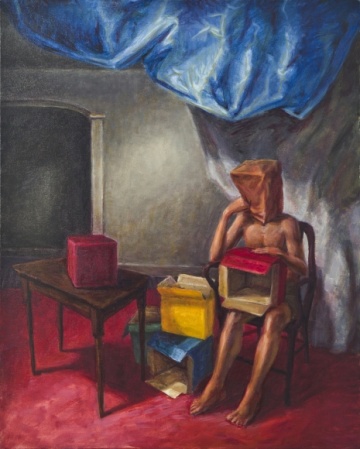
Hugh Steers
Boxes
August 30, 2019 - September 22, 2019
Diagnosed in 1987 with HIV, Hugh Steers’ subject matter speaks to his experience of the devastation of the AIDS crisis. Ultimately succumbing to AIDS-related complications at the age of 32, Steers maintained a commitment to figuration throughout his short career. He once described his work as “allegorical realism” created "to draw the viewer in through the lure of a comfortingly recognizable style and then confront him with a subject matter of a challenging nature." At once surreal and political, "Boxes" (1990) presents a seated man wearing a paper bag over his head surrounded by empty, open packages. Grounded in the history of Western art, the billowing drapery that frames the tableau recalls the swagged material of Baroque and Neoclassical portraiture. Meanwhile, Steers' unseeing figure alludes to the willful blindness of the AIDS epidemic, the government's resistance to directly addressing the crisis, and the alienation of the disease's victims.
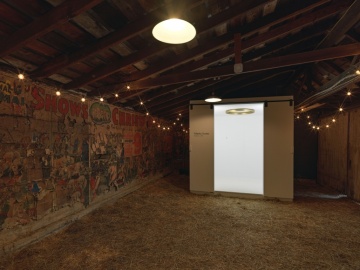
Valeska Soares
Ouroboros
August 2, 2019 - August 25, 2019
Valeska Soares creates poetic works that fuse and expand upon the languages of post-minimalism and conceptual art. The installation "Ouroboros" (2014) maps the relationships between time and space. The work’s title refers to the symbolic representation of a serpent swallowing its own tail—a metaphor for wholeness and infinity. Soares replaces this mythological act of consumption with a golden pocket watch (in Portuguese, the word for gold is ouro) that is suspended from the ceiling by a delicate wire. The watch executes an almost imperceptible rotation in space, turning at the speed of one revolution per hour. Deprived of its hour hand, which Soares removed, the clock loses its function of offering a reference to a specific moment in the day. Instead, it attests to the inexorable passing of continuous time.

Melvin Edwards
Djeri Jef Fatou
July 5, 2019 - July 28, 2019
For more than five decades, Melvin Edwards has created evocative sculptures that juxtapose disparate steel elements to reflect on varied themes—oppression, labor, violence, the African Diaspora, etc.—and pay tribute to historic figures and friends. "Djeri Jef Fatou" belongs to the artist's series of "Discs," which he began to create in Senegal in the early 2000s. Featuring a tangled amalgamation of nails and other industrial components, the work’s reductive welded structure expands on minimalism's formalist legacy. At the same time, its title is a homage to Edwards’ close friend Fatou Ndiaye Sow (1937–2004), a Senegalese poet, teacher, and children’s book author. Furthering this connection to Senegal, "Djeri Jef Fatou" adapts the phrase “jërë jëf” or “thank you” from Wolof, a widely-spoken language in the country.
Ultimately, "Djeri Jef Fatou" reveals Edwards’ deep engagement with Africa. Since first traveling to the continent in 1970, the artist has been committed to highlighting its incredible cultural diversity. As he concludes, “In my own generation of artists, and people I encountered there, I realized Africa was going to influence me not in terms of the ‘see something, get something visual’ that will influence your work, as much as a corroboration of generations feeling a similar need to create something new and different.”
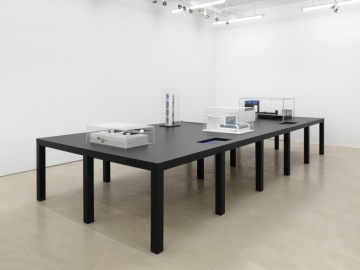
Regina Silveira
Unrealized / Não feito
June 6, 2019 - July 12, 2019
Alexander Gray Associates presents an exhibition of ten unrealized projects by multidisciplinary artist Regina Silveira. Emphasizing Silveira’s ongoing formal experimentation and conceptual interventions in architecture, the works on view provide an overview of site-specific installations and public art projects that were never realized in physical space. Regina Silveira: "Unrealized / Não feito" is the Gallery’s fifth solo presentation of Silveira’s work, and celebrates a decade since her first Gallery exhibition in 2009.

Harmony Hammond
Bandaged Grid #5
May 25, 2019 - June 25, 2019
Harmony Hammond’s "Bandaged Grid" series (2015-Present) develops out of the artist’s "Near Monochromes," combining an earth-based palette with an expanded vocabulary of found fabrics layered in horizontal rows onto the canvas. The use of found material scraps traces back to Hammond’s work of the 1970s, which was made from the discards of friends and businesses in New York’s garment district. Then as now, Hammond harnesses these materials as a means to disrupt the art historical canon. As she explains, “Found and recycled materials and objects are one way to bring content into the world of abstraction, as they all have histories that accompany them wherever they go.” In "Bandaged Grid #5," grommets demarcate the grid, in both readymade strips and ones that Hammond has added to the canvas. For Hammond, the holes reference bodily orifices, putting these paintings into relationship with the experience of living in a body.

Count of Three
April 18, 2019 - May 25, 2019
Alexander Gray Associates presented "Count of Three," a survey of abstract painting from the 1960s to the present that takes structure—both formal and metaphysical—as a position to work within and against, opening onto myriad generative possibilities. Bringing together artists situated in an array of art historical, social, and cultural contexts, the exhibition features works by Polly Apfelbaum, Torkwase Dyson, Sam Gilliam, Carrie Moyer, Ulrike Müller, Odili Donald Odita, Betty Parsons, and Jack Tworkov.

Ricardo Brey
February 28, 2019 - April 6, 2019
Alexander Gray Associates presented its first exhibition of work by Ricardo Brey (b. 1955), "Doble Existencia / Double Existence." Born in Havana, Cuba, Brey has lived and worked in Ghent, Belgium since 1990. From the late 1970s onwards, Brey’s practice, which spans drawing, sculpture, and installation, has focused on his research into the origins of humankind’s co-existence in the world. The presentation features a selection of recent work encompassing the artist’s ongoing exploration of philosophical concepts like time, mythology, human expression, and the natural universe.
Joan Semmel
A Necessary Elaboration
January 10, 2019 - February 16, 2019
Alexander Gray Associates presented "A Necessary Elaboration," an exhibition of new work by Joan Semmel (b.1932), in its fifth exhibition with the artist. In paintings made during the last two years, Semmel continues her investigation of the nude self-portrait, in a series of large-scale canvases featuring the artist’s body as volumetric subject realized through expressive brushwork and brilliant color.

Lorraine O'Grady
Cutting Out CONYT
October 25, 2018 - December 15, 2018
Alexander Gray Associates presented "Cutting Out CONYT," an exhibition of new work by Lorraine O’Grady (b.1934). Featuring a selection of prints from "Cutting Out CONYT" (1977/2017), in O’Grady’s words, the show revealed her ongoing commitment to “establishing the diptych as a ceaseless conversation of difference.”
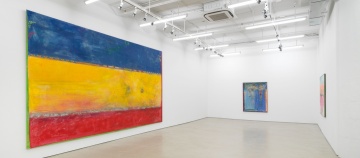
Frank Bowling
Frank Bowling: Make It New
September 6, 2018 - October 13, 2018
Alexander Gray Associates presents its first exhibition of work by Frank Bowling OBE, RA (b.1934), "Frank Bowling: Make it New." Born in British Guiana, Bowling maintains studios in London and New York. For over five decades, his practice has been defined by its integration of autobiography and postcolonial geopolitics into abstraction. Featuring a selection of recent work, the presentation celebrates Bowling’s contributions to the field of painting.

Hugh Steers
The Nullities of Life
June 6, 2018 - July 20, 2018
Alexander Gray Associates presented its third exhibition of work by Hugh Steers (b.1962—d.1995), "The Nullities of Life." Before his death at 32 from AIDS related complications, Steers created allegorical images that captured the emotional and political tenor of New York in the late 1980s and early 1990s. Embracing representational painting and figuration at a time when such approaches were deemed unfashionable, his intimate compositions are poignant symbols of life under the specter of AIDS. Featuring a selection of paintings and works on paper, the show highlights Steers’ interest in capturing what he once described as “my ‘nullities of life,’” seemingly insignificant moments rendered extraordinary through luminous color and light and evocative forms.
 Back to all Member Galleries
Back to all Member Galleries


